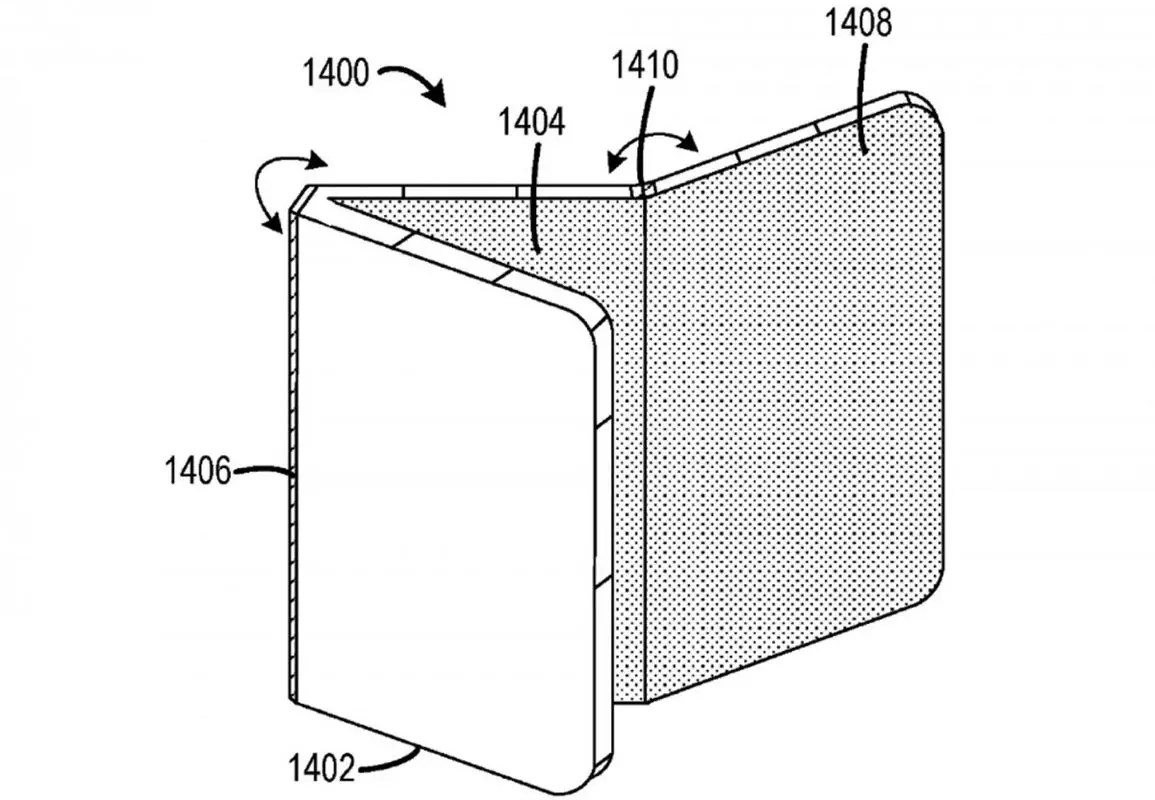Did you know that Microsoft Android patents play a crucial role in the tech giant’s revenue strategy? With over 300 patents related to the Android operating system, Microsoft reaps substantial profits through Android licensing fees each year. These patent licensing agreements not only bolster Microsoft’s financial standing but also underscore the intense competition between Android and Windows Phone. Despite facing challenges in the mobile sector, Microsoft’s innovative patent approach has resulted in an impressive financial gain from the booming Android smartphone sales. In this article, we’ll delve into how Microsoft has managed to extract a whopping six billion dollars from its Android-related dealings, showcasing the fascinating intersection of technology and business.
The interaction between Microsoft and the Android operating system reveals a complex landscape of innovation and competition in the tech industry. Known for its extensive intellectual property portfolio, Microsoft leverages numerous Android-related patents to maintain a competitive edge against rivals like Google. This rivalry extends to various aspects, including the lucrative market for mobile devices, where licensing deals have become a significant source of income. Furthermore, the impact of Android smartphone proliferation highlights Microsoft’s strategic maneuvers in capitalizing on licensing agreements, ensuring revenue growth amid the competition with its own Windows Phone initiative. As we explore this dynamic relationship, it’s essential to understand both the financial implications and the technological advancements that shape the mobile ecosystem.
Understanding Microsoft Android Patents
Microsoft’s substantial portfolio of over 300 patents related to the Android operating system showcases its strategic approach to mobile technology. These patents cover various aspects of the Android framework and ecosystem, enabling Microsoft to establish a firm foothold in a market dominated by Google. By asserting its patent rights, Microsoft has not only diversified its revenue streams but also ensured that Android manufacturers comply with licensing agreements, which is crucial for their operational legality.
The legal groundwork laid by these patents is vital; it underscores the competitive dynamics between Microsoft and Android’s developers. For instance, every time a new Android smartphone is released, Microsoft benefits financially through these licensing agreements, further strengthening its business model in the face of rising Android smartphone sales. This synergy between innovation and legal enforcement highlights Microsoft’s ability to navigate the intricacies of the tech landscape, leveraging its intellectual property to secure strong financial gains.
The Impact of Android Licensing Fees on Microsoft’s Revenue
The licensing fees that Microsoft collects from Android device manufacturers play a critical role in its financial success. Reports suggest that, in recent years, Microsoft has garnered approximately six billion dollars from these fees. This revenue is primarily generated through agreements with major manufacturers like Samsung, where royalties are calculated per device sold. Such licensing arrangements not only contribute significantly to Microsoft’s bottom line but also demonstrate the underlying value of its patent portfolio.
These Android licensing fees are indicative of a broader trend in the industry, where companies like Microsoft have turned to patent licensing agreements as a lucrative revenue source. With the escalating sales of Android smartphones globally, Microsoft is poised to continue reaping financial benefits as it capitalizes on every device produced. This unique strategy allows Microsoft to thrive even amid intense competition from Google’s Android and the ongoing struggles within its own Windows Phone division.
Competition Between Microsoft and Google in the Mobile Market
The rivalry between Microsoft and Google is perhaps most evident in the mobile market, where both giants vie for consumer attention and market share. Though Microsoft has faced challenges with its Windows Phone initiative, it has not deterred the company from leveraging its patents to extract value from Android’s success. This partnership through licensing agreements exhibits a complex relationship where competition and collaboration co-exist, allowing both companies to benefit from the growing smartphone ecosystem.
As Android smartphone sales surge, Microsoft’s ability to earn revenue from licensing agreements with manufacturers provides a buffer against losses incurred from its own mobile products. This dynamic highlights a strategic pivot for Microsoft, where, instead of solely focusing on promoting Windows Phone, it can simultaneously tap into the Android market, ensuring sustained profitability despite competitive pressures. Such moves illustrate Microsoft’s depth of strategy within its patent licensing frameworks.
Windows Phone: A Competing Venture or a Strategic Move?
Microsoft’s investment in the Windows Phone platform has often been viewed through a dual lens: as both a potentially valuable venture and a strategic risk. Despite its ambitious goals, Windows Phone has struggled to capture significant market share against dominant players like Android. Nevertheless, this challenge has not hampered Microsoft’s financial ecosystem, as revenue generated from patent licensing agreements directly assists in offsetting losses from its mobile endeavors.
In fact, integrating its services—such as Mail, Skype, and Office—into Windows Phone is a strategy aimed at enticing users. However, the contrasting performance of Windows Phone against the backdrop of booming Android sales exemplifies the tough competition Microsoft faces. While Windows Phone strives for growth, the company smartly capitalizes on Android’s expansion through patent licensing, thereby ensuring a consistent flow of revenue that buffers against market challenges.
The Role of Patent Licensing Agreements in Microsoft’s Profitability
Patent licensing agreements are critical to Microsoft’s profitability strategy, particularly concerning its Android-related patents. By forming partnerships with leading smartphone manufacturers, Microsoft creates a win-win situation where both parties can leverage each other’s technology without infringing on patents. These agreements are significantly impactful, with Microsoft reportedly earning more than one billion dollars from Samsung alone, illustrating the scale and importance of intellectual property in the tech landscape.
The broader implications of these licensing fees illustrate how effectively Microsoft can monetize its patents. As Android continues to dominate the smartphone market, Microsoft stands to gain substantially, further emphasizing the benefits of maintaining a strong patent portfolio. This continuing source of revenue not only sustains Microsoft financially but also reinforces its commitment to innovation while fending off competition in an increasingly aggressive mobile market.
Exploring Microsoft’s Financial Gains from Android Evolution
The evolution of Android has resulted in significant financial gains for Microsoft, primarily through robust licensing agreements with various manufacturers. With over a billion Android devices sold each year, the potential for revenue generation remains immense for Microsoft. Experts estimate that Microsoft’s take from these patents could surpass six billion dollars annually, making it clear that the Android ecosystem is a crucial component of Microsoft’s overall revenue strategy.
As Microsoft ties its financial success to the growing popularity of Android devices, it becomes evident that the relationship is mutually beneficial. While Google may be the direct competitor, Microsoft’s profit from Android licensing underscores the complexities of the tech industry where collaboration can emerge from competition. This strategy not only reinforces Microsoft’s market position but also demonstrates the adaptability of corporate strategies within the fast-changing tech landscape.
The Financial Landscape of Microsoft’s Patents
Understanding the financial landscape shaped by Microsoft’s patents illustrates the complexity of modern technology business models. With a solid foundation in patent law, Microsoft has managed to create a profitable revenue stream from its extensive Android patent portfolio. Each licensing deal made with manufacturers translates into a predictable stream of income, which becomes increasingly vital as Microsoft navigates its path in a competitive marketplace.
Moreover, analyzing the financial success of Microsoft’s licensing agreements provides insight into the broader implications of intellectual property in technology. Companies are increasingly recognizing the value of enriching their bottom line through strategic patent utilization. As such, Microsoft’s approach to leveraging its Android patents may serve as a model for other firms aiming to optimize their revenues while contending with fierce competition.
The Future of Microsoft in the Android Ecosystem
Looking ahead, Microsoft appears to be strategically positioned within the Android ecosystem, capitalizing on the substantial financial benefits of its patent licensing agreements. As Android continues to penetrate global markets, Microsoft’s royalties could potentially rise alongside Android smartphone sales, making the company a permanent fixture in the mobile landscape regardless of Windows Phone’s performance. This adaptability ensures Microsoft remains relevant even amid shifts in consumer preferences.
Furthermore, as competition evolves within the mobile domain, Microsoft’s strategy highlights an increasingly prevalent trend among tech giants—leveraging patent portfolios for strategic advantage. By remaining engaged in the Android ecosystem, Microsoft not only secures a profitable niche but also prepares itself to pivot as needed, adapting to future industry changes while simultaneously laying down the groundwork for sustained profitability and innovation.
Enhancing Microsoft’s Competitive Stand through Licensing Revenue
Microsoft’s ability to enhance its competitive stance through licensing revenue from Android patents showcases a well-calibrated business strategy. The company has transformed a direct competition narrative into one of mutual profitability by monetizing its intellectual property while extending the reach of its services. This strategic approach allows Microsoft to stabilize its financial performance and innovate within its core product lines, despite challenges faced by Windows Phone.
This licensing revenue empowers Microsoft to invest further in research and development, ensuring that it does not fall behind in innovation even as it collects fees from competitors. By fostering a sustainable model of revenue through patent licensing, Microsoft effectively redefines its role in the mobile technology landscape, proving that competition does not have to equate to financial loss, but can also provide pathways to growth and success.
Frequently Asked Questions
How does Microsoft generate revenue from Android licensing fees?
Microsoft generates significant revenue from Android licensing fees through its extensive portfolio of over 300 Microsoft Android patents. By entering into patent licensing agreements with various smartphone manufacturers, Microsoft collects royalties on each Android device sold. For instance, in 2013, Samsung reportedly paid Microsoft approximately $1 billion for Android licensing, translating to around $3.41 per device.
What are Microsoft Android patents, and why are they important?
Microsoft Android patents refer to the numerous patents that Microsoft holds related to the Android operating system. These patents are crucial as they enable Microsoft to extract licensing fees from manufacturers of Android smartphones, thus generating substantial revenue, estimated at around six billion dollars from Android-related sales.
How many patents does Microsoft hold related to Android, and how does it impact competition?
Microsoft holds 310 patents related to the Android operating system, which impacts competition by allowing the company to benefit from Android smartphone sales despite competing with devices like Windows Phone. These patents help Microsoft to monetize its inventions while participating in the broader mobile market.
What role do patent licensing agreements play in Microsoft’s Android strategy?
Patent licensing agreements are vital to Microsoft’s Android strategy as they facilitate revenue generation from manufacturers who produce Android devices. By securing these agreements, Microsoft capitalizes on the popularity of Android smartphones, earning a share of the profits from their sales. This strategy helps mitigate losses from its own Windows Phone competition.
Can the revenue from Microsoft Android patents increase in the future?
Yes, the revenue from Microsoft Android patents can potentially increase in the future as smartphone sales continue to grow. With millions of Android devices sold each year, and if Microsoft maintains its licensing agreements, the revenue from patent licensing could further escalate, particularly with the inclusion of tablet sales in the calculation.
How do Microsoft’s Android patents affect its competition with Google?
Microsoft’s Android patents create a unique competitive dynamic with Google, as they allow Microsoft to profit from a rival platform while competing in other areas. While Google leads the Android market, Microsoft capitalizes on its patents to generate revenue, which supports its ongoing competition in various technology domains.
| Key Point | Details |
|---|---|
| Microsoft’s Patent Holdings | Microsoft holds over 310 patents related to the Android operating system. |
| Revenue from Licensing | Microsoft generates significant revenue through licensing fees from Android manufacturers. |
| Competition between Microsoft and Google | Microsoft and Google compete across many domains, including mobile operating systems. |
| Financial Gains from Android | In 2013, Samsung’s royalty payment to Microsoft was approximately $1 billion. |
| Estimated Earnings from Patents | Microsoft is estimated to earn around $6 billion from Android related patents. |
| Impact on Windows Phone | Despite struggles with Windows Phone, Microsoft’s patent agreements are financially beneficial. |
Summary
Microsoft Android patents play a crucial role in the company’s strategy within the mobile ecosystem. With over 300 patents related to the Android operating system, Microsoft has carved out a profitable niche despite its ongoing competition with Google. The licensing fees from Android manufacturers, which amount to around six billion dollars, highlight the financial significance of these patents. As Microsoft continues to leverage its intellectual property, it proves that even in competition, strategic investments can yield substantial returns.








